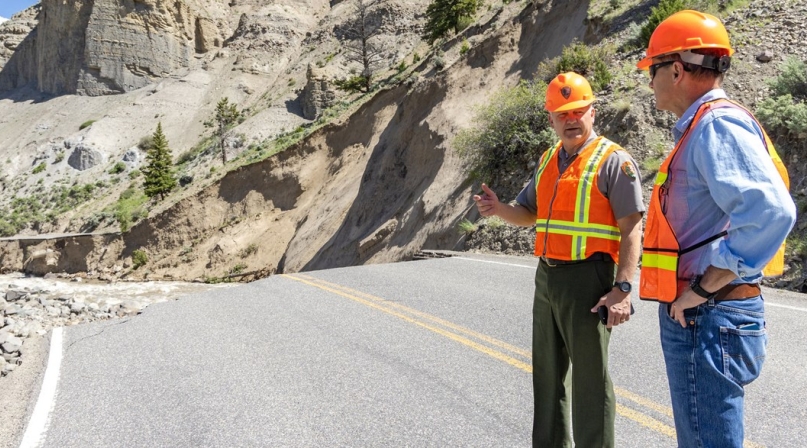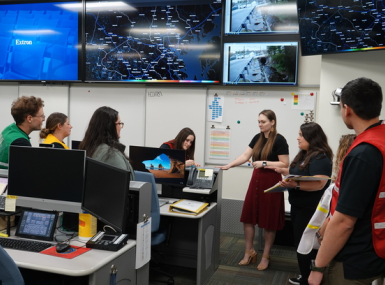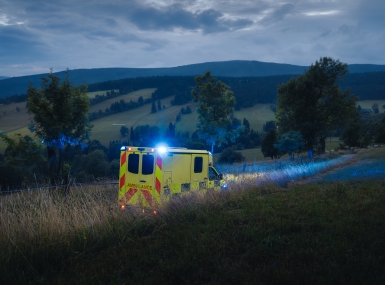Flood damage cuts off Montana counties from Yellowstone

Key Takeaways
It was a lean two years in Gardiner, Mont. As the COVID-19 pandemic depressed two summers’ worth of visitors to Yellowstone National Park, businesses in the 900-person Park County town bided their time and looked ahead to the fated “normal summer” when they could serve tourists again.
In the decade before the pandemic, most summer months saw 60,000 cars travel through the North Gate.
This June, before most of the throngs could come through town, 5 inches of rain melted another 4 inches of Montana snow into the Yellowstone River, which washed out the road in the canyon south of town, cutting off access to the park’s northern loop.
As the National Park Service assessed damage to the park, all five entrances were closed June 13, right as the summer travel season was starting to hit full capacity at the end of the school year.
“A lot of businesses have already done things like buy an entire summer’s worth of food, so it’s all in refrigeration and freezers,” said Park County Commissioner Steve Caldwell. “They already have reservations lined up. It looked like it was going to be a pretty good summer, and people were hoping for a big season.”
Attempted stolen valor?
To the west, U.S. 191 takes visitors south from Bozeman to the West gate through Gallatin County, Mont. Gallatin County residents reported receiving text messages marketing some generic-looking “Gallatin County 9-1-1” T-shirts.
County communications coordinator Whitney Bermes received the message and thought it was targeted spam because she worked for the county.
A few minutes later, she got a call from a television news reporter asking about it and she realized how widespread the messages were. The county’s emergency services department responded on Facebook that the marketing effort was a scam and not affiliated with the county: “We pride ourselves in serving our county residents and visitors with life-saving services. We do not sell t-shirts.”
Bermes said it wasn’t clear if the county had any legal recourse to address the fraud.
“We figured it was someone being opportunistic with what was going on in our general part of the state,” she said.
A week later, the south loop reopened, and while road and bridge repairs will be necessary for the north loop to reopen, the prognosis has improved to include possible reopening this year, before the seasonal closure in November.
“They are going to open roads much quicker than they had anticipated,” Caldwell said. “We’ve been getting good news from the superintendent.”
But that good news likely won’t apply to U.S. 89, which connects Gardiner to the park. Instability in the canyon is making prospects for rebuilding shaky, Caldwell said, and the park is considering abandoning that route in favor of improving a gravel stagecoach road with climbs that currently measure 12 percent. Substantial paving and grading work will be required to make it passable. That temporary solution will have to suffice while the Park Service figures out a permanent option.
Throughout the 2010s, summer months regularly saw more than 60,000 cars pass through the North Gate every month from June to September.
“Gardiner is still going to have a serious hiccup, but at least it will be a hiccup and not a prolonged bout of isolation,” Caldwell said.
Park County Health Officer Laurel Desnick estimated 30 percent of the county’s economy was focused on hospitality services.
“Everything will be normal other than we’re not an entrance to Yellowstone Park,” she said, noting that the investments and infrastructure to support that tourism could be redirected in Park County.
“There are many other activities that have probably been passed over because everyone was so focused on the park. It’s just a big shift.”
Park County is also home to the Northeast Gate, which passes through more tourist towns — Cooke City and Silver Gate on U.S. 212, known as Beartooth Highway.
Floods washed out four county bridges near Cooke City, though Caldwell noted three were scheduled for replacement in the fall.
Caldwell said businesses have sought assistance from the Montana Department of Commerce and FEMA to possibly be compensated for individual damages, though the agency was not set up for that kind of assistance.
Desnick said that several concessionaires had received inquiries about moving to work near the South Gate in Teton County, Wyo., and reported wages of $25 an hour. But there was a catch.
“When people asked about a place to live in Jackson…that ended up being the problem,” she said.
“There’s a labor shortage, just like everywhere else, but there’s also a housing shortage.”
Plainly put, a lot of people settled and built businesses to serve the flow of tourists and that flow has been endangered.
“They are small towns, so for the majority of people, they’ll move on, and come to Yellowstone some other time,” Desnick said.
“For the families who live in Gardiner and Cooke City, it’s devastating.”
Up the road, the Beartooth Highway moves into Carbon County to the east, and the town of Red Lodge.
Like Gardiner and Cooke City, it’s lost its claim to fame as a gateway town, but in addition to losing what is roughly a 90-day peak tourism period, Commissioner Bill Bullock said damage to the county’s irrigation system is also imperiling its short agricultural season.
“The timing of this couldn’t be worse,” he said.
“The irrigation system, countywide, is annihilated. The monumental size and scope of this can’t be overstated.”
Many farmers can’t reach their headgates to turn their water on, and Bullock said every major drainage has been affected.
“We’re in the beginning stages of what could be a decades-long process. It’s not going to be overnight, it’s not going to be next week, it’s not going to be by the end of the summer,” he said. “This is something we’re married to a very, very long time.
“We had a fire last year, we had a flood this year, all of these things add up and start to give Carbon County a negative connotation.”
The bright spot, he said, has been the efficient restoration of basic services and the attention the county has received, including a visit from FEMA Administrator Deanne Criswell.
On the transportation end, the county’s strong partnerships with the state and federal government and local contractors has helped expedite work to the point where most residents can return to their homes, and the county itself, which only had one road to the outside world, now has three.
“The work to get our transportation system back up on the county end has been monumental, it’s rapidly approaching the point where it’s functional,” he said.
“It’s not going to be perfect, it’s probably not going to be paved, but that’s the goal.”
Attachments
Related News

Cross-training helps county 911 scale up for big emergencies
With training, Howard County, Md. staff help filter and respond to non-emergency requests for information and assistance during period of heavy 911 call volume.

CMS announces Rural Health Transformation Program funding
On December 29, the Centers for Medicare & Medicaid Services (CMS) announced $50 billion in awards over 5 years to all 50 states under the Rural Health Transformation Program.

Senators introduce bipartisan UPGRADE Act to support small and rural public water systems
On December 15, Sens. Lisa Blunt Rochester (D-Del.) and Roger Wicker (R-Miss.) introduced the Unincorporated Partnerships for Grant Resources, Assistance, and Drinking Water Enhancements (UPGRADE) Act (S. 3465), a bipartisan bill that would strengthen federal support for small public water systems and helps unincorporated communities access clean and affordable water.
